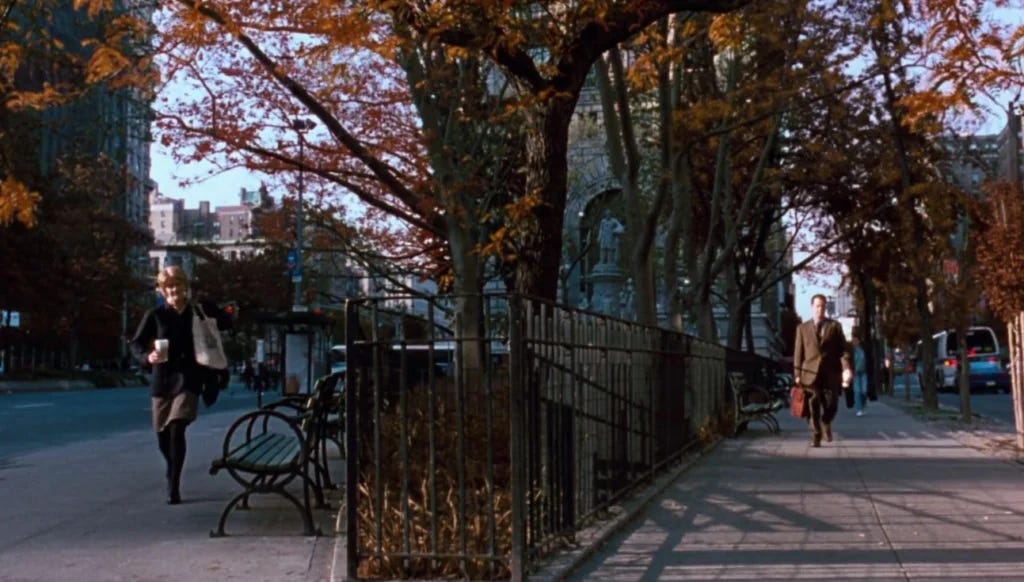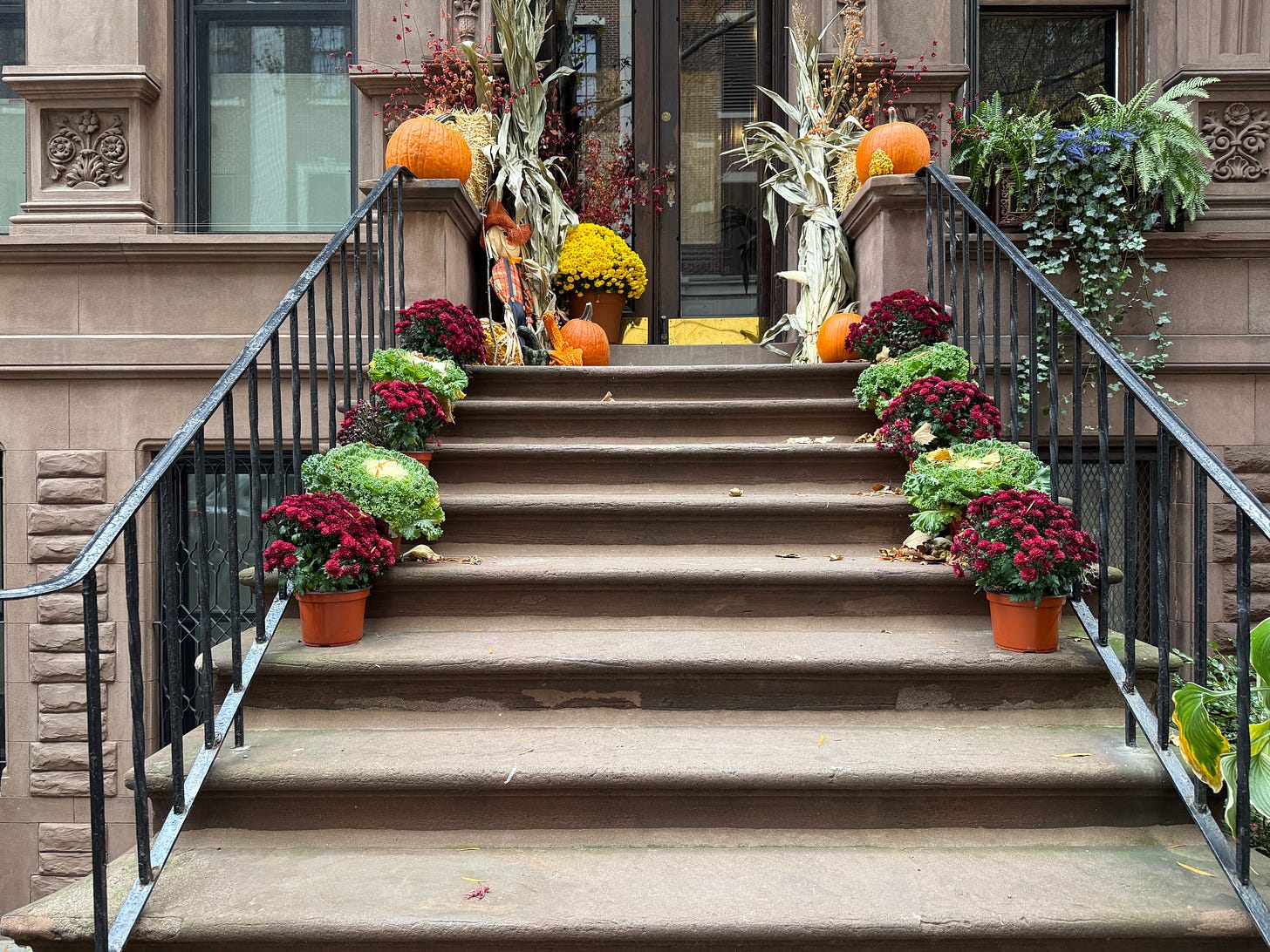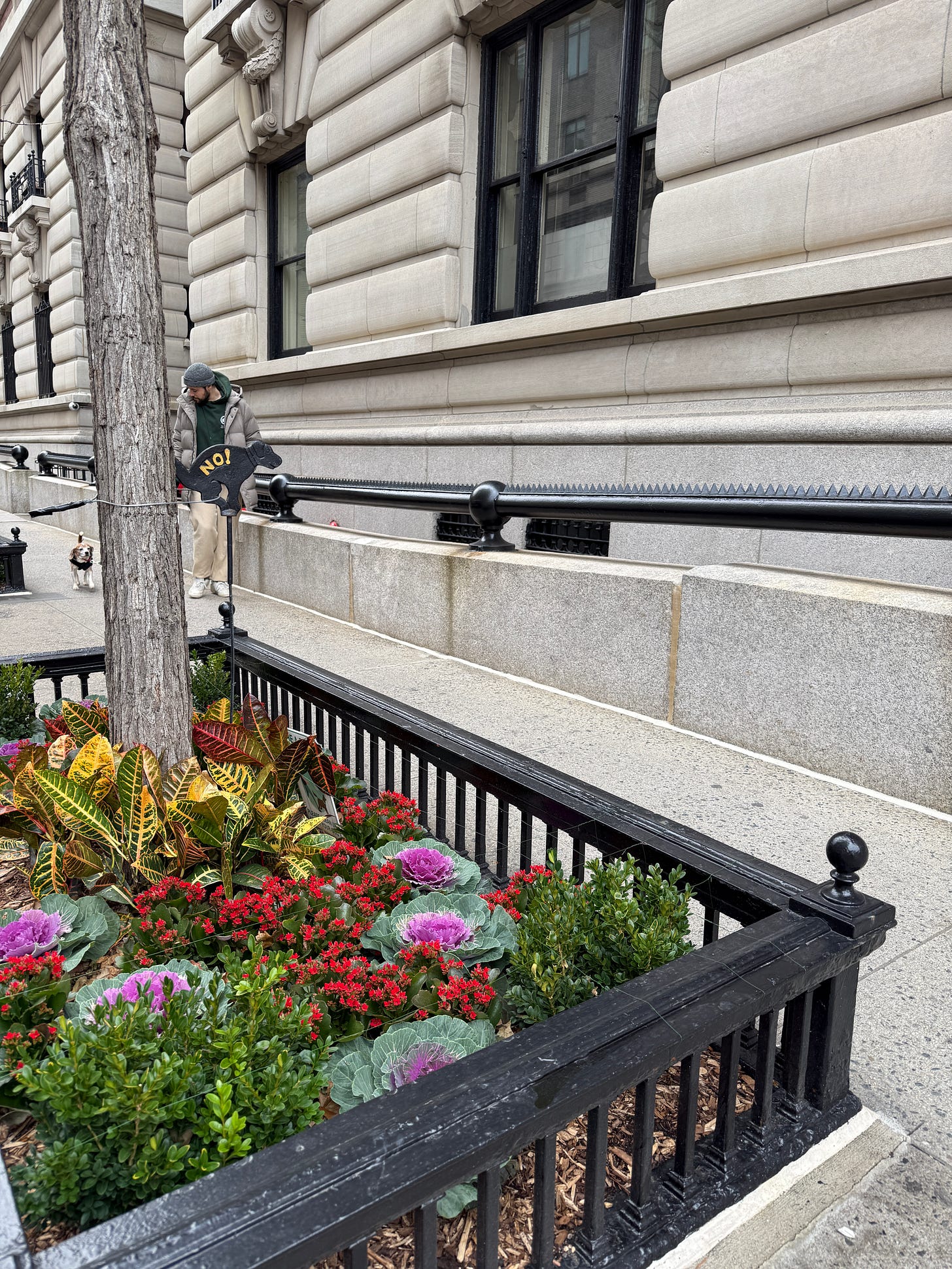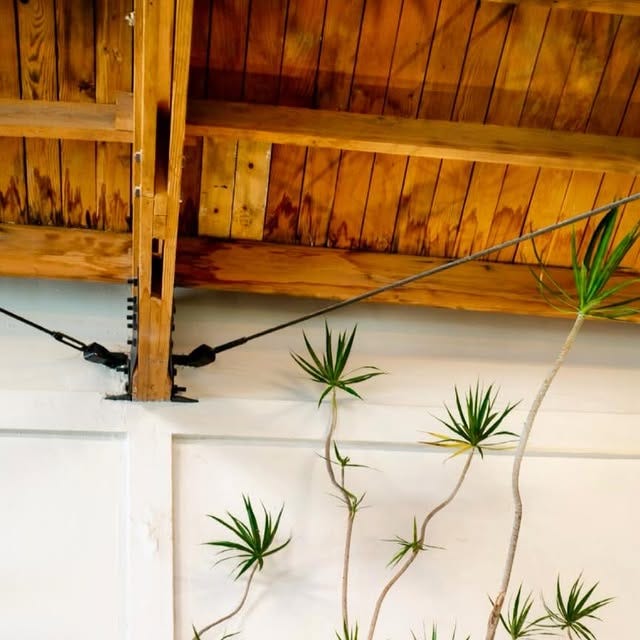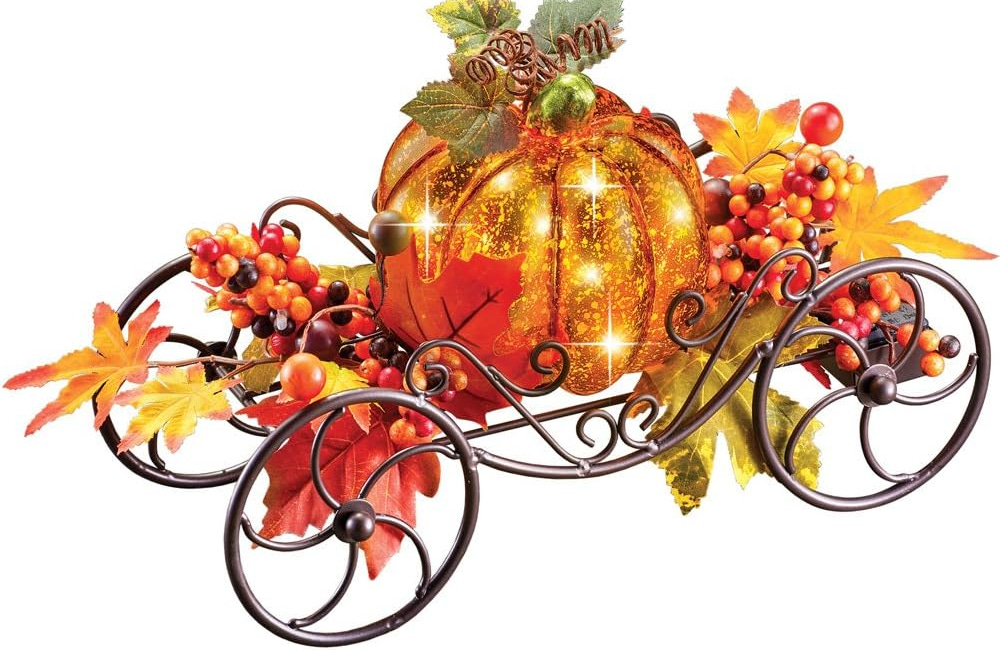Autumn on the Upper West Side is truly dreamy — cue up Harry Nilsson, wander toward Zabar’s, and imagine yourself in You’ve Got Mail.
Of course, the Upper West Side of 1998 (when You’ve Got Mail came out) is a far cry from the Upper West Side of 2025 — and I’d know; I grew up here. The mom-and-pop stores are mostly gone, the beloved nut shop (“where it’s fun”) has vanished, and even the Starbucks where Meg Ryan and Tom Hanks crossed paths is now a Verizon store.
What remains are the lovely brownstone streets, their stoops dressed in pumpkins and other fall-related foliage. After dropping my daughter at school, I sometimes treat myself to an $8 matcha and wander the 70s between Columbus and Central Par West to gawk.
(ICYMI, I’ve moved in with my parents here in NYC while I either a) find stable work in a dying field or b) win the lottery — whichever comes first. At this point, option B seems more likely. But if you’re hiring, I’m available and looking for full-time work.)
It’s been a while since I’ve spent meaningful time in NYC, but what’s new to me is all the cabbage. Everywhere from flower beds outside the Apple Bank building to the curated flower boxes of the single-family brownstones. They’re all surrounded by enormous plantings of kale.
The Manhattan elite seem to have conspired to extend a spirit of cruciferous oblige.
Kale is actually quite practical as a cold-weather planting — it withstands frosts and offers a decorative advantage when exposed to low temperatures as the suppression of chlorophyll production leads to the development of a range of green, purple, and blue hues.
Decorating with kale isn’t new. In Manhattan, kale has been a standard fall planting in business and residential districts for at least a decade. And according to Flower.Style (a website to which we will extend the benefit of the doubt): “By the 17th century, ornamental brassicas became attractive new additions to cottage gardens as bedding plants. When ornamental types finally reached the U.S. from Japan in the 20th century, ornamental kale saw its first debut in seed catalogs in the 1930s.”
But when kale starts appearing on the stoops of $16 million brownstones, it’s hard not to see it as a status symbol — part of a plant-as-prestige lineage that stretches back centuries.
Most notably, the emergence of decorative palm trees during the Victorian era and Gilded Age, when the plants were elite souvenirs brought back from long-haul trips abroad. In the days before current billionaire pastimes — like yachting and going to space — Jay Gould, the American railroad magnate, was a proud collector of palms, which he displayed at a giant greenhouse at his Hudson Valley estate. Like many things only available at first to the rich, palms made their way into the mass design vernacular during the 20th century, symbolizing luxury and glamour.
In more recent years, plants took on the role of design democratizers, especially around 2016 when an explosion of “bohemian” design took over Instagram. The fiddle leaf fig, the pothos, and the snake plant became the great equalizers for millennial renters, offering a low-cost strategy for truly filling up a space. Start-ups capitalized on direct-shipping these houseplants, marketing them as low-maintenance, perfectly timed to the peak of millennial self-deprecation — at the point in their lives before children and homeownership and being a “plant parent” was the best you could do in this economy. Oh, and the pandemic. Yeah, that, too.
But you may have noticed in the past year or two that the home tours gracing the pages of major decor magazines feel — generally but not entirely — houseplant-free.
In its stead for the 1%: the standalone indoor tree. Both the Teigen-Legend and Zedd households have one — granted these celebs both have highly engineered fakes. But, I have it on good authority from my friend — a Hollywood landscape designer who works with celebrities and insanely wealthy people, let’s call her “S.” — that rich people have no problem planting expensive trees in the center of their homes, even when those trees need to be replaced every YEAR because they can’t survive in their environments.
S. agrees with me that the indoor plantapalooza is waning with the rich (she said one couple she worked with didn’t want plants indoors because they were afraid they’d attract bugs and spiders). But there’s a rise of decorating indoors and out with tree plantings in vintage pottery, specifically wares by Architectural Pottery designed by David Cressey and Stan Bitters. There’s also an obsession with Frenchman Willy Guhl’s planters. (The comedian Eric Wareheim is a prominent collector/enthusiast of architectural plantings and has been working with L.A.-based Serpentine to curate landscape projects.)
But these plants aren’t really about greenery says S. — it’s more about sculpture and collectibility. “[Wealthy clients] are not into the clean, modern planters anymore. They want curation, they want objects. It’s more a desire for ‘art’ over an abundance of greenery.” Like the standalone trees, these “specimen” plantings are usually not meant to be housed in these types of containers and will need to be replaced — and at no small cost.
Which to me, screams rich-people boredom and needing to find another way to spend their money. But would I love a funky ficus in a huge Willy Guhl conical pot in my home (or on the patio)? Oh yes.
But the yo-yo of taste — from aristocratic to accessible, maximalist to minimal — never really stops. Eventually, Target will make a reproduction of a Brutalist urn for $50, making sculptural plantings as commonplace as kale on a brownstone stoop.
It’s all part of the same choreography: we sanctify the rare until it becomes ordinary, then start the dance again.
Unrelated note: Our craftsman home in Pasadena is available for short-term rental starting Jan. 1.
RELATED:
Palm Trees Have Quite the Design History
Today’s post — about the history of palm trees and palm fronds in design — was written my dear friend and fellow Smithie, Angela Serratore. Angela writes about design and history for many esteemed publications, including Dwell, The New York Times, The Strategist, Lapham’s, and others. Follow her on Twitter (x?),
Fuck "Decorating for Fall"
Yeah, ok, so it’s “fall” or whatever. But you’d never know it over here in Los Angeles where it is fucking eight billion degrees and all the sweaters I optimistically bought are staring at me from my closet going, “HEHEHEHE! I ate all your money!”




